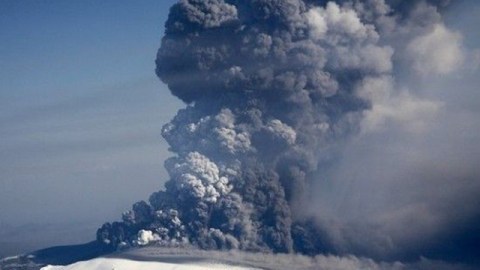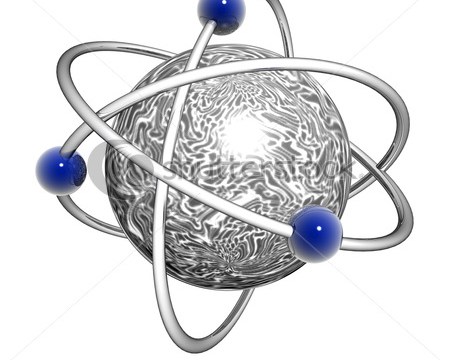It has now been one year since the eruption that closed the skies over Europe and captured the world’s attention. Before April 13-14, 2010, most people outside Iceland (or this blog) had ever heard the name Eyjafjallajökull and suddenly (much to the dismay of broadcasters everywhere), it became a household name.
We’ve talked about the volcano – a lot – and rightly so. The eruption at Eyjafjallajökull won the 2010 Pliny for Volcanic Event of the Year, narrowly beating out the eruption at Merapi in Indonesia. Although the eruption at Merapi might have been a bigger disaster in terms of human life and property, it didn’t come close to the 24 hour media coverage that was seen during the height of the Eyjafjallajökull event. Part of that was because Eyjafjallajökull was smack in the middle of the western world, between Europe and North America, instead of in southern Asia, where most of the people affected by Merapi were not Americans or Europeans (that’s the media for you). Part of it was that there was controversy surrounding Eyjafjallajökull – namely the closure of airspace over Europe. The debate broke down, as many things do, between corporations and government, with the airlines wanting a quick closure (for obvious reasons) and the EU government wanting to be more cautious. Both sides were arguing mostly the same points: (1) we don’t know what different amounts of ash will do to aircraft and (2) we don’t know exactly where the ash is over the continent. Now, many people came out against the EU government because of their overly cautious approach and reliance on models to predict the location of the ash plume (thanks to diligent work by the London VAAC), but really, there was no other plan on how to deal with such an eruption affecting Europe. In the hearings in the United Kingdom about the closure, it was clear that no one has truly anticipated that an eruption of this relatively small magnitude in Iceland could have such a profound impact on almost the entire European community.
Satellite image showing the ash from Eyjafjallajökull spreading over Europe on April 15, 2010.So, rather than rehash all the finer points of the eruption – which you can see in the announcement for the 2010 Pliny, your thoughts on the eruption or the vast Eyjafjallajökull archive on Eruptions – I thought I’d take my personal stab at what we learned and didn’t learn from the eruption that stopped Europe.
What we learned:
Volcanoes in remote locations can have a major impact on the world economy: We have already seen this during some of the eruptions in the Kuril Islands or Kamchatka, where air traffic was disrupted by ash plumes. However, the Eyjafjallajökull eruption crippled one of the busiest continents for air travel for an entire week, so the global mess for air travelers was large and long-lasting.An ounce of preparation is better than a pound of recovery: Clearly, the EU was unprepared for both the style and magnitude of this event, and it might not have been the actions of the EU officials that ruffled the most feathers, but rather the apparent uncertainty about what they planned to do. However, there was obviously little cooperation between airlines and government officials, so the perceived chaos in when/where to reopen airspace seemed apparent. If there had been a plan for how to sample ash in the air, predict its location and if the airline industry had pursued research on the tolerances of ash in jet engines, then some of the chaos could have been avoided.Iceland is full of surprises: Eyjafjallajökull was clearly not #1 on anyone’s list of an Icelandic volcano to erupt and cause such a mess. However, volcanic activity is so common on the small island that these sorts of things happen and are likely to happen again. There might be a higher probability for an eruption at Hekla or Grímsvötn or Krafla, but there is still the chance it could be from one of those other, more anonymous volcanoes.The Icelandic Meteorological Office is good: I think we need to offer a round of applause to the Icelandic Meteorological Office for their handling of the eruption. Not only did they have all the realtime monitoring that allowed us to see what was going on, but they also kept their website updated on an almost daily basis during the height of the eruption, posting compositional data, maps, images and more as the events were unfolded. They clearly understood how the internet works today and how to get good information out quickly – and show how volcano monitoring by government agencies can save lives and property as the death toll directly from the eruption was zero in Iceland.Predictions can be dicey: Trying to say when the eruption would end was difficult, especially right after the eruption started. Many people (even me) said that it could last months and Europe would not see normal air travel for a long time. Well, after about a week, air travel was back and within a month or so, minus a few brief closures, especially in northern Europe, was pretty close to what is was before the eruption. Sure, airlines lost money, but it wasn’t the economic apocalypse what was implied early on. The steam and ash plume from Eyjafjallajökull seen on April 14, 2010.
What we didn’t learn:
Disaster-mongering is a fool’s errand: Anybody notice that big eruption of Katla that followed the eruption at Eyjafjallajökull within days? Me neither. Yet, we still get people insisting on trying to make any disaster into an even bigger one.If left to the media, we’ll only remember the economic cost and personal inconveniences: So far, many of the anniversary articles in the English-speaking media I’ve seen talk about your rights as air travelers during such an event or the economic impact. Too bad everyone seems to have missed the science – and there is a lot of it. Do a quick search on Google Scholar for Eyjafjallajökull since 2010, and you “only” get 495 returns. That is in one year of time since the explosive eruption started (13 months since the whole show began). There is the real story: everything we’ve learned about such an unexpected and high impact event. The cultural impact in fascinating as well – with museums and art about the eruption.Needless to say, the eruption of Eyjafjallajökull is going to become the textbook example of how a volcano will effect the modern, technologic society of the western world in the early 21st century. It brought some of the great superpowers to their knees with a few explosions and left many people wondering why governments around the world don’t have a plan for volcanic disasters, even if you’re a country like the UK with no local volcanoes of your own. However, I hope it did get people, especially in government and air travel, to think about how to better deal with an eruption that has the ability to disrupt so much air traffic (ahem, Rainier … or for a better comparison, Glacier Peak?) so the next time an eruption threatens, we have a plan on how to handle the ensuing chaos.
Top left: Eyjafjallajökull erupting on April 24, 2010.








